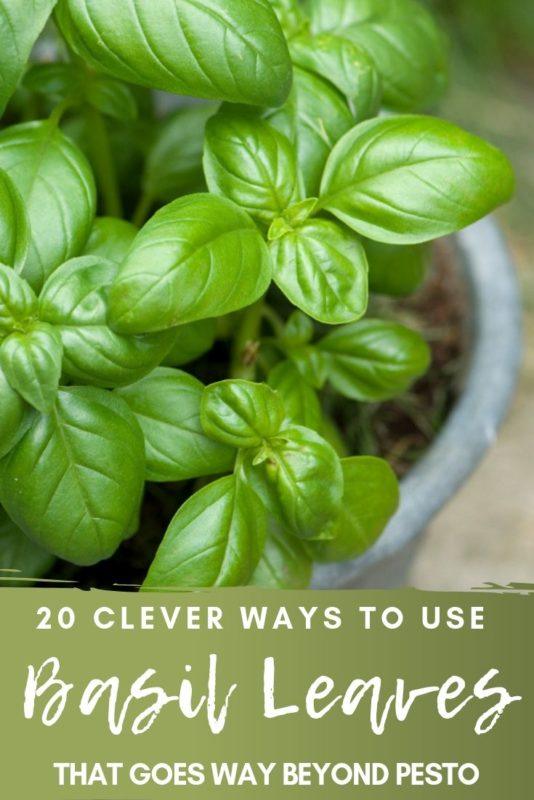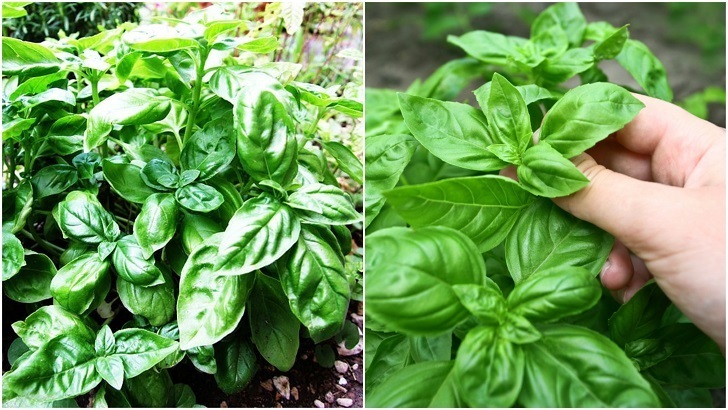
As one of the easiest herbs to grow indoors, many newbie gardeners may find themselves landed with an abundance of pungent and peppery fresh basil leaves to use up.
Availing of the flavor and healing powers of basil shouldn’t be of concern though – this herb is as easy to use as it is to grow!
Read Next: How To Grow A Giant Basil Bush: A Pro Gardener Reveals Their Secret
How To Harvest & Prepare Basil
You can harvest basil from your plant at any time, which is why a sunny kitchen window is the perfect position for this delicious herb.
Not only will you be flavoring your food, you’ll also be encouraging the plant to produce even more leaves.
For best results, harvest small amounts regularly (no more than one third of the entire plant at any one time).
Rather than cutting off a stem in its entirety, pinch a few leaves off several stems which will encourage the plant to fill out.
If growing outdoors, at the end of the season (before first frost) cut the stems to the ground. You’ll then need to remove the leaves from the stems, discarding any dead or damaged ones.
Compost the stems and keep the beautiful basil leaves for the following uses:
As a Food
Basil has been used around the world for centuries with good reason – it adds a delicious depth of flavor that cannot be matched by other herbs.
Some of the more popular culinary uses of basil include:
1. Classic Pesto
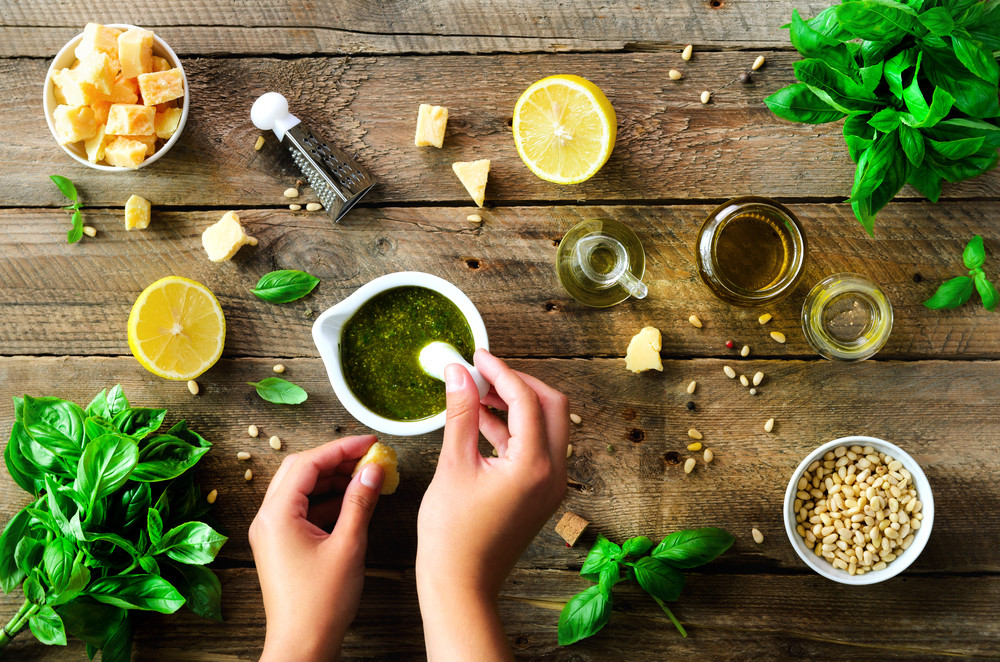
One of the best known sweet basil based recipes, pesto alla Genovese is fantastic on pasta, pizza and salads, or served with meat or fish.
This recipe calls for fresh aromatic basil, raw garlic, aged parmesan, pine nuts and extra virgin olive oil.
For a dairy-free and vegetarian version (parmesan contains animal products!), this pesto isn’t quite such a traditional recipe, but it’s pretty close and packs a flavor-filled punch.
2. Dressings and Marinades
An incredibly versatile herb, basil can be used in all manner of dressings and marinades.
Lemon juice and honey perfectly complement basil’s pungency in this delicious salad dressing while a basil, balsamic and garlic marinade is perfect on chicken or tofu.
3. Vinegars and Oils
Preserving the flavors of basil through vinegar or oil infusions is a simple way to store and use your excess basil leaves, without the need for fancy equipment.
Try making this basil vinegar for use in salad dressings, marinades and other recipes requiring vinegar.
Likewise, basil oil can be used for all these recipes and more – including as a healthy drizzle over cooked vegetables or as a dipping sauce for warm, crusty breads.
4. Herbal Butter
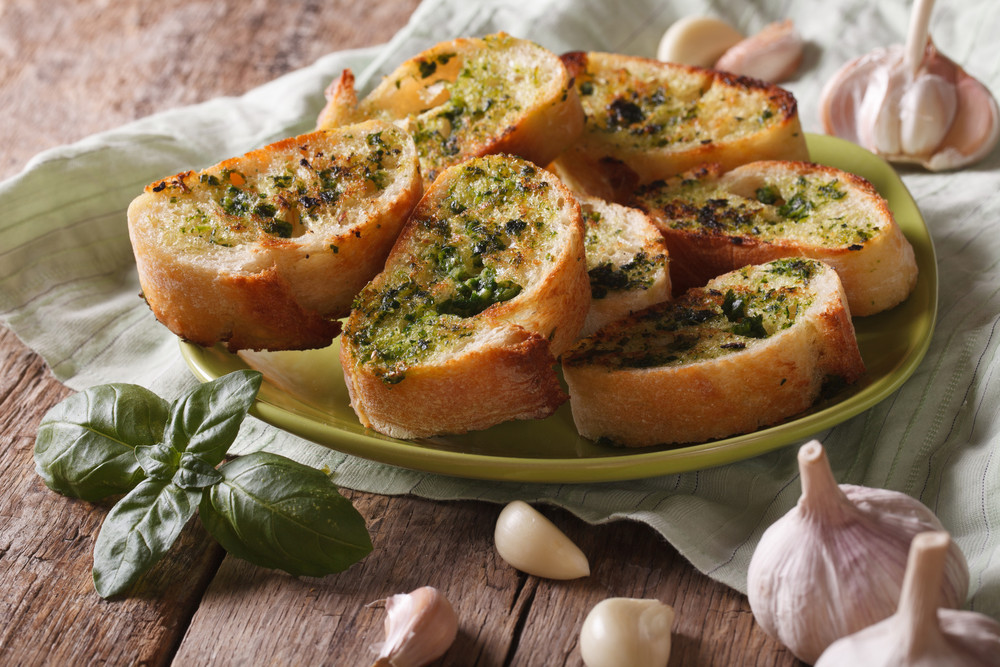
Flavored butters are a wonderful tasty addition to grilled meats and vegetables, pasta, potatoes and breads.
Save money and preserve your basil bounty by making your own flavored organic butter – this lemon basil garlic butter recipe is especially impressive.
5. Basil Salt
Yet another way to use your basil leaves while sneakily imparting a flavor burst to your food, basil salt is surprisingly easy to make.
Follow this two-ingredient recipe.
6. Sauces and Soups
One of the most classic pairings in Italian cuisine is tomato and basil – which is why you can’t go wrong adding some fresh or dried basil herb to your tomato based pasta and pizza sauces, along with those for cottage pie, lasagna and more.
Soups, too, are a fantastic way to enjoy basil.
Aside from the classic tomato and basil soup, the herb pairs well with carrot, zucchini, mixed vegetable, pea, broccoli or chicken.
7. Salads and Sandwiches
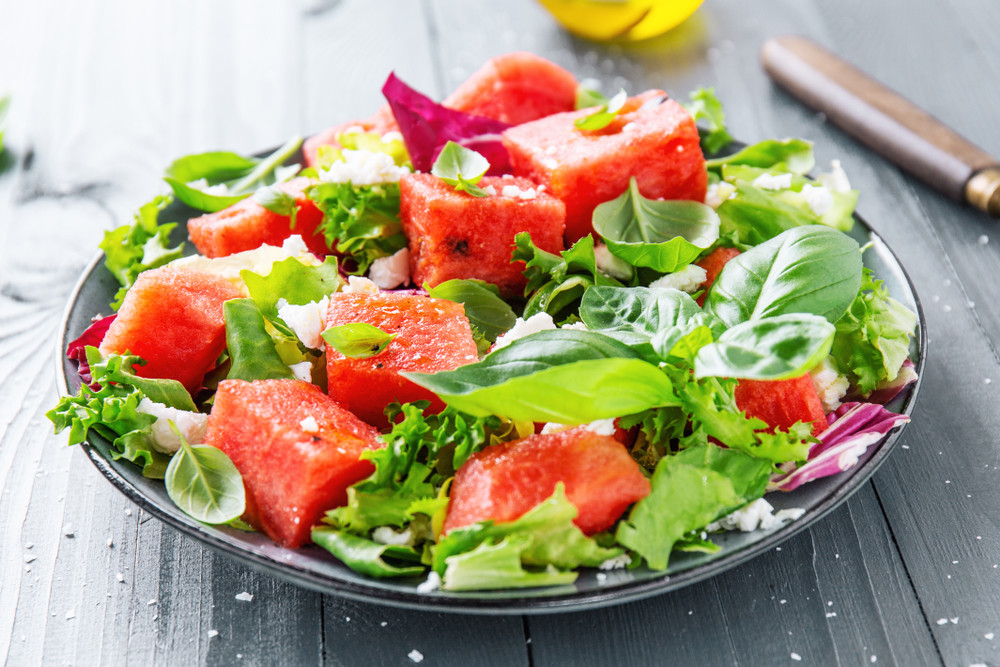
While we all think to add basil to a Caprese salad, few experiment with this zingy herb in other leafy meals.
But it’s delicious chopped up with other greens, and always works with tomato and cucumber.
To really push the boat out, try this basil Caesar salad; pair basil with feta cheese or get in the summer mood with a blend of strawberry, cucumber and basil!
Basil works in all manner of sandwiches too – whether they’re open or closed or served on wraps, pita breads, flat breads and more.
8. Breads and Pastas
Don’t just serve basil on your pastas or bread, mix it into the dough of these delicious staples.
This basil and garlic fettuccine is so flavorful it doesn’t require much more than a light butter or olive oil sauce and the flecks of basil liven up the dinner plate.
Stick with a Mediterranean theme by dipping warm chunks of this whole-wheat basil focaccia bread into extra virgin olive oil.
9. Desserts
Basil’s peppery flavor doesn’t just lend itself to savory dishes, it actually works surprisingly well in a great many desserts too!
Lemon basil yogurt cake, mint basil syrup, strawberry basil shortcakes, basil ice-cream, strawberry galette or basil lime sorbet are just some of the ways you can satisfy your sweet tooth while making use of your basil plant.
10. Drinks
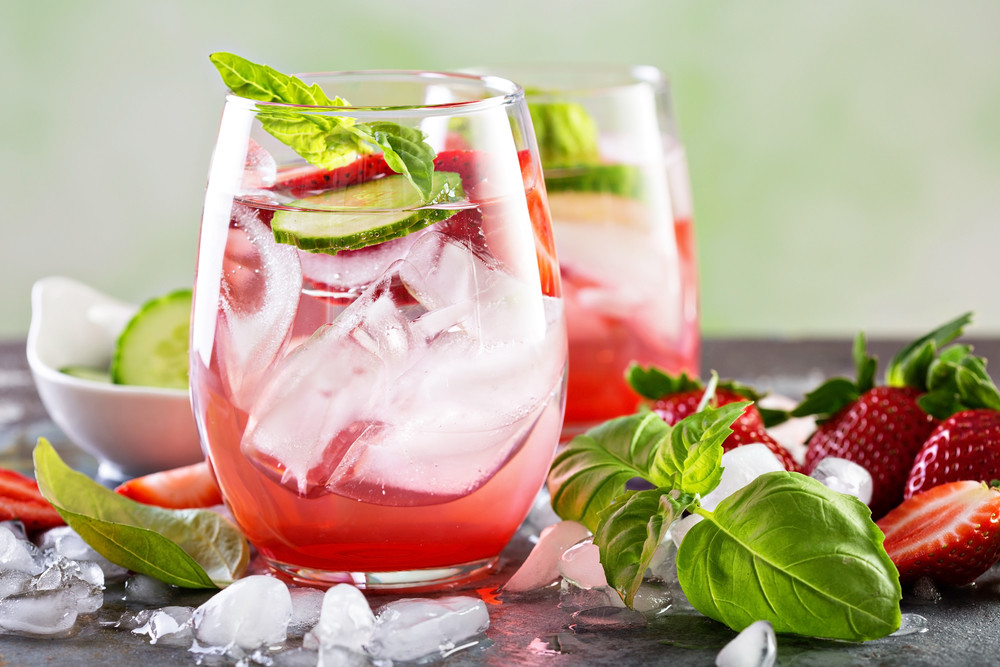
Add a little zing to many cocktails with a few torn basil leaves – gin and tonic, vodka and soda, or even a mojito will all benefit from its peppery flavor.
For something a little more complex – that really lets the basil shine – try a strawberry and basil margarita; a basil and lime vodka cooler; a strawberry, rhubarb and basil Bellini; or a cucumber and basil vodka.
Herb infused alcohol-free drinks are equally delicious – cool down this summer with sweet basil lemonade or a cucumber, mint and basil soda.
For a warming, tropical feel this pineapple basil tea has you covered, while smoothie lovers will appreciate a banana and basil shake.
11. General Cooking
The list of ways to use basil in the kitchen doesn’t end here – it has a myriad of applications from stir fries to scrambled eggs, from curries to tagines.
Experiment with your basil harvest and you’ll soon discover how truly versatile this delicious herb can be.
As a Medicine
Basil should be part of everyone’s natural medicine cabinet – some varieties of the plant are actually as strong as anti-inflammatory drugs and have been shown to reduce swelling in arthritic patients by up to 73% in just 24 hours!
Here’s how you can harness its therapeutic properties:
12. Basil Essential Oil
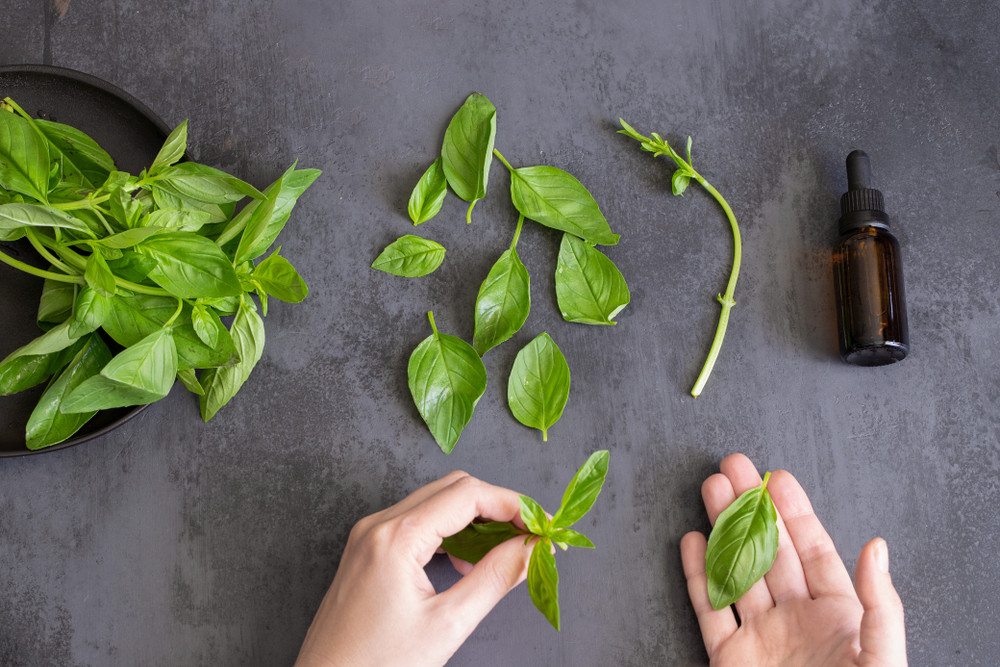
Make your own basil essential oil from your organic and homegrown plant and reap its many health benefits – including relief from nausea, motion sickness, indigestion, constipation, respiratory problems, stress, uneven skin tone, insect bites and poor circulation.
This tutorial provides a step-by-step guide to making your own essential oils.
To make a less potent sweet basil oil (a simpler process), infuse basil leaves in a carrier oil like jojoba or olive for three to six weeks.
This can be used to soothe insect bites, to rub into sore muscles or to give a relaxing massage.
13. Steam Away Headaches
Because basil works as a muscle relaxant and has analgesic properties, steam infused with the leaves of the plant is said to be an effective treatment for tension headaches.
Add a tablespoon of dried basil leaf, a handful of fresh leaves or a few drops of basil oil to three cups of water and bring to a boil.
Transfer immediately to a large, heat proof bowl.
Drape a towel over your head and lean over the bowl, positioning the towel to keep in as much steam as possible. Breathe in the vapors for up to ten minutes.
Alternatively, you can diffuse some basil essential oil through the room, or massage a drop or two (mixed with a carrier oil) onto the temples.
14. Calm the Stomach
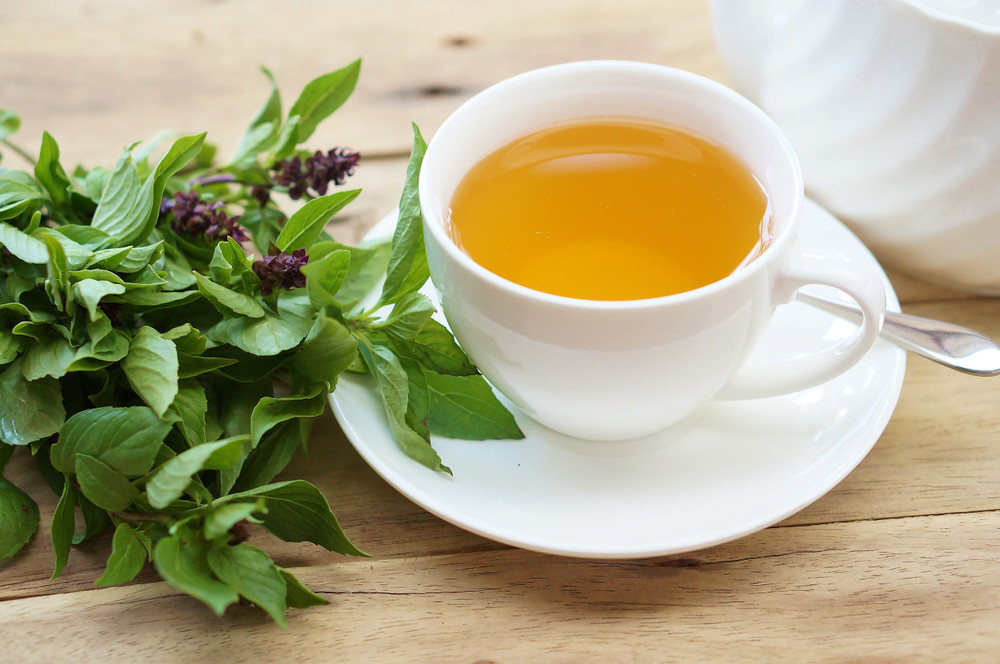
Basil tea is great for soothing an upset stomach or helping digestion. Steep three basil leaves in a cup of boiling water and drink three or four times a day, between meals.
It’s also thought to relieve symptoms of acid reflux, especially when mixed with a spoon of raw honey.
15. Bites and Stings
In addition to its painkilling properties, basil oil is both antimicrobial and antioxidant according to the Journal of Agricultural and Food Chemistry, making it a fantastic addition to any topical healing salve.
These properties are probably what makes basil so successful at relieving the pain and itching associated with insect bites or bee stings.
While you can apply some basil oil to the affected area, you can also chop or chew up a basil leaf and apply it to the bite for quick relief.
16. Calming Bath
Known to relieve anxiety, basil leaves or oil can be added to your bath – along with a cup or two of Epsom or Himalayan Pink Salt.
Its antiseptic properties will also keep your skin soft, supple and free from acne or other skin infections.
17. Ease Congestion
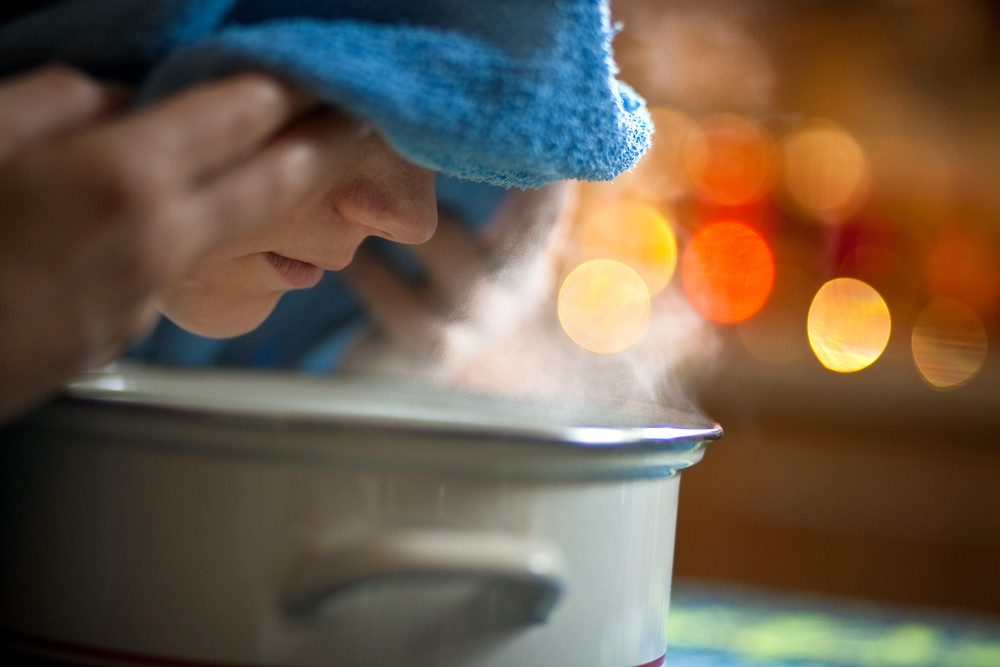
The age old remedy of steaming the face to relieve congestion has been used to enhance health for thousands of years – by Hippocrates, the father of medicine; by the ancient Romans; and by the native people of North America.
Add a little fresh or dried basil to your steam and you’ll be increasing its decongestant powers.
The plant’s natural antihistamine and analgesic properties will have you feeling better within minutes.
18. Natural Body Deodorizer
With so many toxic chemicals in antiperspirants and deodorants, it’s wise to steer clear of them for both optimal health and the good of the environment.
That doesn’t mean you have to go around smelling like old gym socks though – there are plenty of natural ways to deal with body odor…and one of them is by eating more basil!
That’s right, herbs like basil, parsley, mint, sage and rosemary are all said to be natural body deodorizers.
You’ll find more ways to reduce your body odor through diet and natural products here.
19. Lower Blood Pressure

In the US, one in three adults have high blood pressure, with the majority of cases believed to stem from poor diet.
Luckily for basil cultivators everywhere, extract of basil has been shown to lower blood pressure (albeit for brief periods).
However, eating it regularly – along with these 21 other foods and drinks – may just make all the difference to your health.
20. Regulate Blood Sugar
Knowing how to maintain balanced blood sugar is one of the biggest keys to unlocking better health – and basil may just help you achieve this goal.
Basil (in particular Holy basil, an Asian variety that differs from the sweet basil typically used in Italian cooking) has been shown to lower blood sugar levels in both normal and diabetic laboratory animals, as well as in diabetic humans.
Learn more about balancing blood sugar levels naturally.
Pin This To Save For Later
